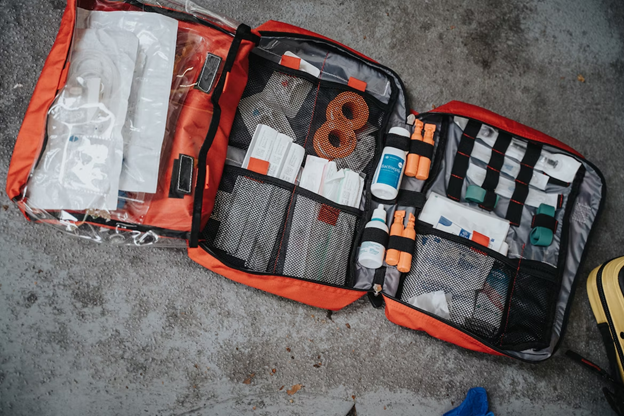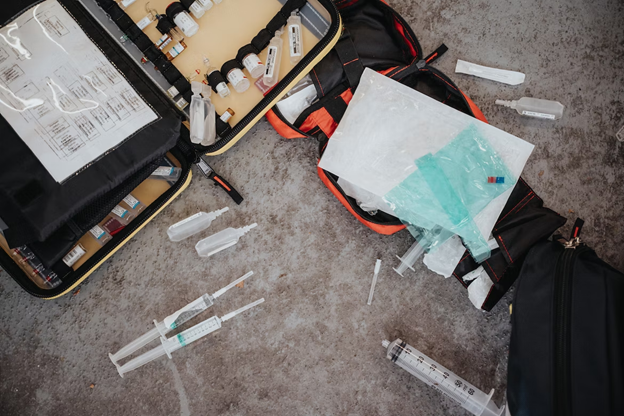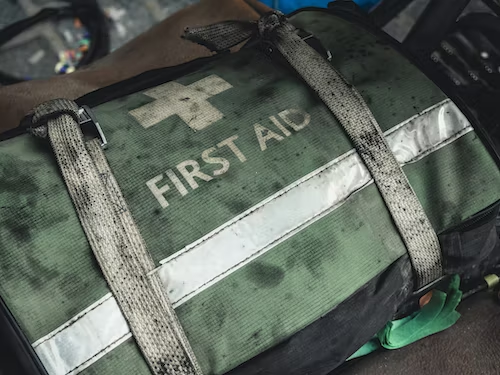Whether you are traveling on a worldwide adventure or simply want to set up a home kit to prepare for all eventualities, a first-aid kit is a vital accessory. In most cases, you have the option to purchase off-the-shelf, but this comes with e downside of sacrificing the ability to custom make a kit for your unique circumstances and the chance to learn about what each item does, Not to mention it can cost a lot more than kitting one out yourself. This post is for you if you are interested in learning how to stock a first-aid kit to meet your needs and want to ensure that every item serves a purpose.

Before You Begin, Consider What You Need Your Kit For
Before you dive right into your nearest store, you need to take time to regard what you will use your first aid kit for. For instance, you can get sports-related items, tropical travel, everyday home use, and almost anything imaginable. Because of the different circumstances you will encounter for each option, every kit will contain an array of distinct components. While they should all include items like band-aids, antiseptic cream, etc., the contents of a tropical first aid kit will consist of things specific to that environment. Conversely, a first aid kit you will take with on on a hunting expedition will include heftier bandages and tourniquets than a kit designed to live in your home. Furthermore, according to the specialist first aid kit supplier eFirstAidSupplies, there are options for both amateur and professional use, depending on your requirements. If you want to be truly prepared, you can also make several kits for different purposes and keep them on hand when you need them.
What To Include In A Standard Kit
Since it’s impossible to know what you will need your kit for, it is best to provide information regarding the basics that all effective kits should include. While this list isn’t exhaustive, it should offer up a decent starting point to build off.
Adhesive Bandages In Various Sizes
When you think of a first aid kit, bandages are perhaps the first item that comes to mind. This is for a good reason because these are arguably one of the most vital; aspects of any kit. You can use them for various reasons, from the obvious, like stemming blood flow, to setting broken bones so they don’t move and cause pain. While you should opt for adhesive bandages for convenience, always pack extra safety pins as a backup to secure the bandages if the adhesive dries out.
Sterile Gauze Pads And Rolls
Some wounds require special treatment, and it’s unadvisable to simply roll a bandage over. Therefore, you will need to include sterile gauze, which you can place over open wounds to ensure the bandages or dressings won’t stick and cause more damage later on.

Adhesive Tape
Tape is always handy to have, and you can use it in numerous ways. In most cases, you will simply use it to secure a band-aid on a finger, but because of its versatility, you can use it for any number of other reasons. Make sure you replace it every now and then, so the adhesive remains tacky and usable.
Tweezers For Removing Splinters Or Debris
The humble tweezer is one of the most overlooked but valuable tools that any first aid kit should contain. More often than not, you will find yourself reaching for the tweezers to remove splinters when your fingers cannot. Furthermore, if you have a wound resulting from debris, you need to ensure it’s clean and clear before you patch yourself up; otherwise, it won’t heal or could become infected.
Scissors For Cutting Gauze Or Tape
Alongside the tweezers should sit a trusty pair of scissors that can be used for cutting all other items to size to prevent waste. If they are sturdy enough, you can also use them as trauma shears to remove clothing; just be careful if they aren’t dedicated trauma shears since they will have sharp points.
Disposable Gloves For Protection Against Bodily Fluids
Regardless of whether you intend to use your kit for yourself or your family, any good samaritan who sees someone in need should offer assistance. This is where you would use your disposable gloves, which creates a barrier between you and the other person’s blood or other fluids that could cause you all kinds of issues.
Antiseptic Wipes Or Solution For Cleaning Wounds
You can include wipes, cream, or both, but the idea remains the same. If you become injured and leave your wound to fester, it will become infected and, in a worst-case scenario, could even lead to death (unlikely but a genuine threat). Antiseptics will flush a wound free of bacteria and facilitate the healing process.
Pain Relievers
You don’t need anything particularly fancy concerning pain relief…you can simply add your regular paracetamol and ibuprofen pills to the kit. Nevertheless, you should add both because ibuprofen also functions as an anti-inflammatory as well as a pain killer.
Antihistamines For Allergic Reactions
Although you might not be aware of anything you are allergic to, you never know when this medication will come in handy. Plus, they are great if you get bitten or stung by something and need the swelling to subside before administering other medications.

Rehydration Salts
You can usually pick these up relatively inexpensively from any large store, but they can be the difference between life and death in some extreme cases. They typically come as a powder that you mix with water and contain electrolytes, vitamins, and minerals. While most people associate them with excessive exertion or sweating, they are valuable for helping you to recover from scenes that cause diarrhea and vomiting.
General First Aid Instructions
Not everyone is au fait with the basics of first aid, so you should include a small set of instructions you can refer to when required. Moreover, these instructions should be kit relevant, so if you are going hunting, they should contain instructions on how to apply a tourniquet, etc. Conversely, it might be wise to include specifics such as your insurance company details and location-specific guides on treating illnesses like diarrhea or Malaria if you are traveling.
Regardless of your reasons for creating a first aid kit, you must ensure it contains most of the items in this post. If you need a kit for specialist reasons, you might need to add additional things specific to your activity.

